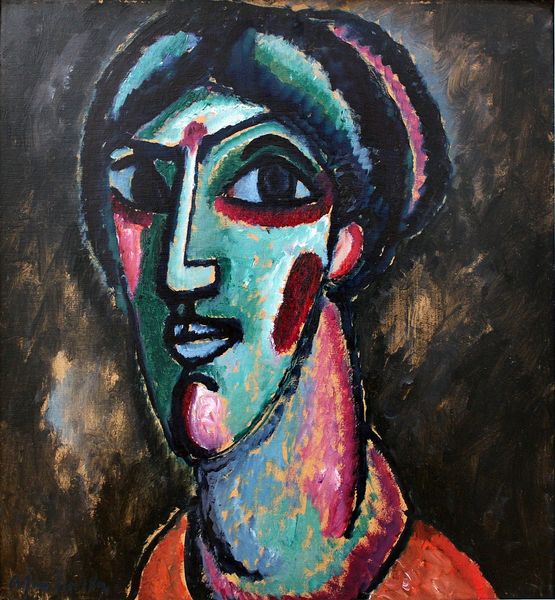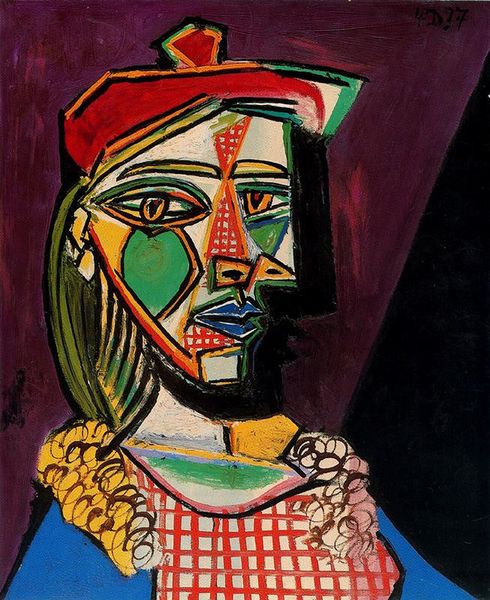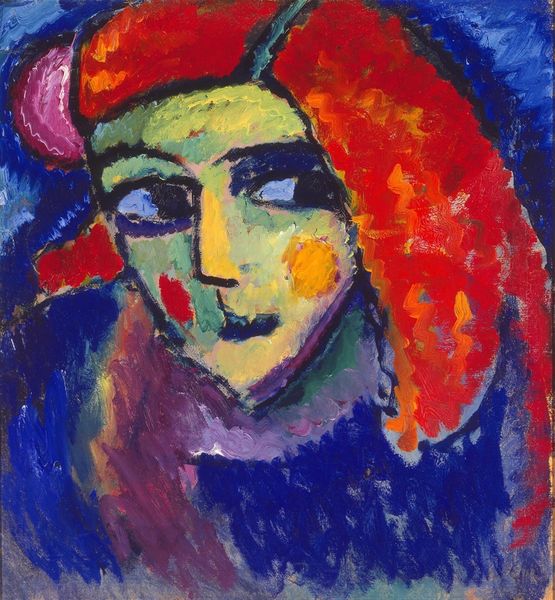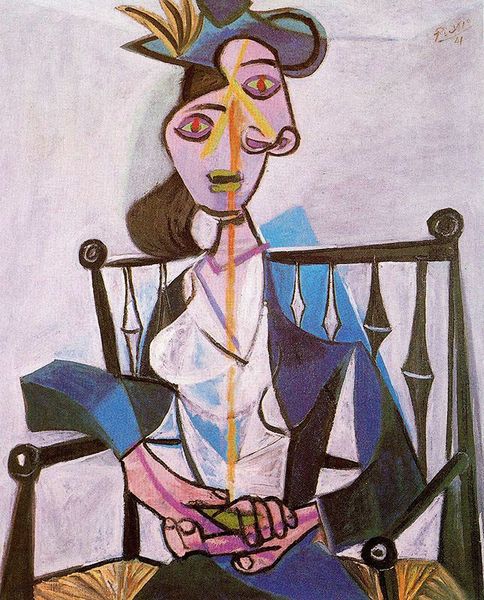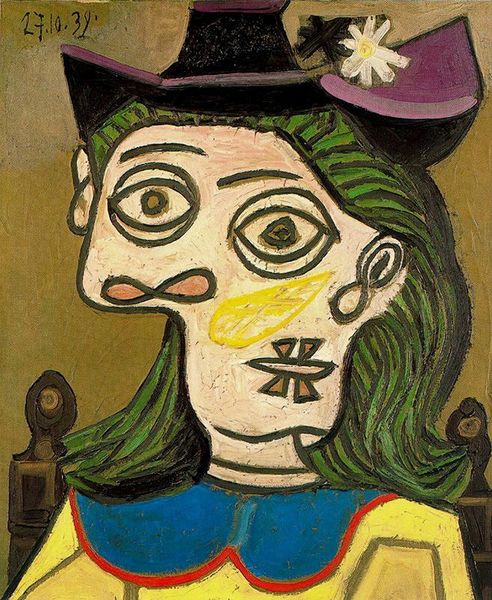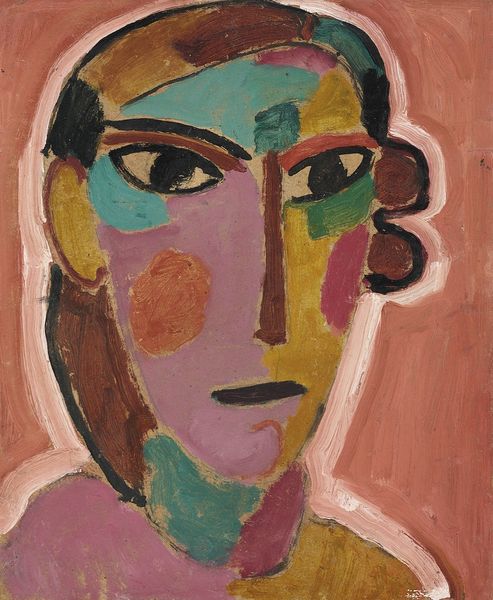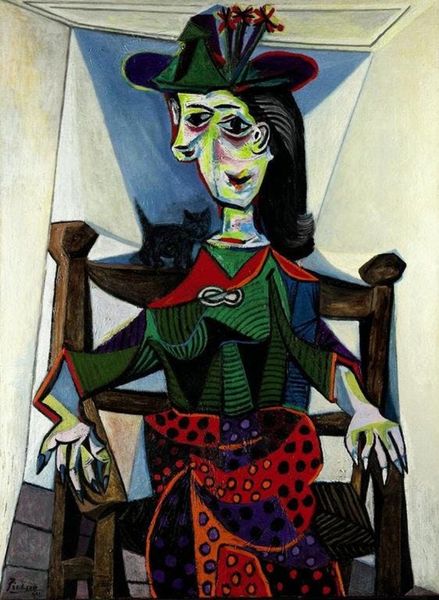
Copyright: Bernard Buffet,Fair Use
Editor: Right, so we're looking at "Le Travesti," an oil painting from 1953 by Bernard Buffet. The portrait features an individual in drag, and I am really struck by how haunting and vulnerable the subject looks, despite the elaborate attire. What's your take on it? Art Historian: I see a powerful commentary on post-war French society. Buffet gained fame for his existentialist style during a time when France was grappling with economic hardship and anxieties following World War II. That distinctive gaunt, angular style reflects the feeling of that era and can be seen as his commentary. Editor: That makes sense, I do feel that sense of anxiety, now that you mention it. Do you think there's anything in particular that highlights it? Art Historian: Absolutely. Think about the performative nature of identity during times of social change. In the early to mid-1950's France there was an effort towards social normalization after war; what statement could Buffet be making by showcasing the figure this painting in direct opposition? Editor: So, the choice of subject matter itself is a statement? Art Historian: Precisely! The "travesti" is disrupting traditional social mores. Furthermore, ask yourself who was exhibiting these artworks and where? Did their gender influence whether they could display it at the time? Editor: So, beyond just the emotional impact, there's also the question of who gets a voice and where their voice can be heard? That makes me look at it very differently. Thanks! Art Historian: Exactly! Looking at art this way gives it new dimensions. Considering the climate gives a powerful view of an artwork that you may not have initially conceived.
Comments
No comments
Be the first to comment and join the conversation on the ultimate creative platform.

